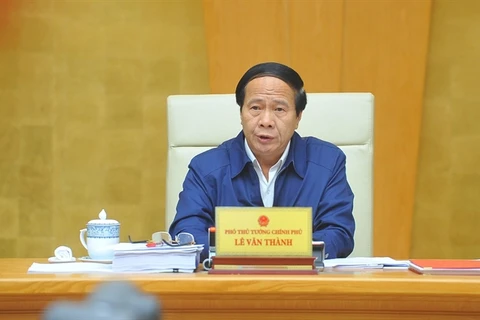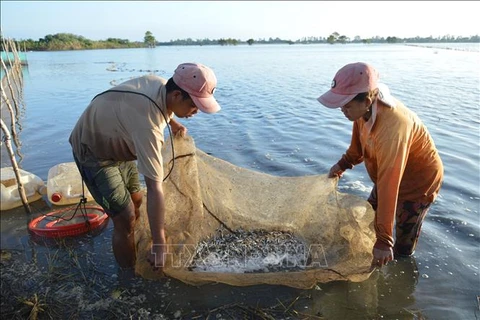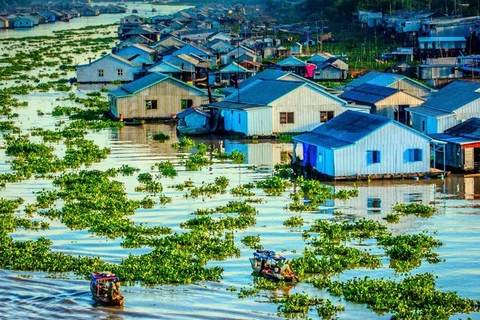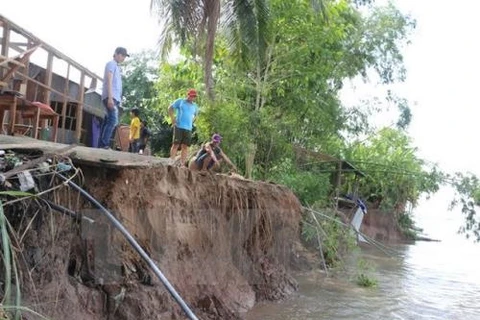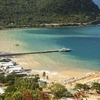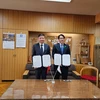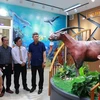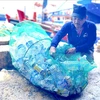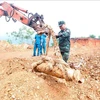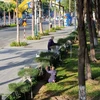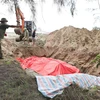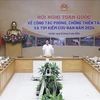HCM City (VNA) – Climate change’s impacts, which are forecast to make the Mekong Delta lower than the sea level by about one metre in the next decade, are the greatest challenge facing the region, threatening all socio-economic sectors, including construction.
According to experts, the building of the urban system in the region should be go along with careful calculations of risks of flooding, erosion, pollution and water shortage. The careful planning of road and waterway systems should receive greater attention to ensure harmony with the irrigation and dyke system.
At the same time, the planning of the fundamental infrastructure system in the region is facing many challenges related to resources, while the region is eyeing the need of exploiting and using renewable energy, new and recycled materials.
Prof. Le Huy Ba, former Director of the Institute for Science, Technology and Environment at the Ho Chi Minh City University of Industry, said impacts from climate change in the Mekong Delta region has become more obvious, with greater effects on the construction sector.
Meanwhile, Dr. Truong Thi Hong Nga from Mien Tay Construction University said many researches and experts have pointed out that apart from advantages, the region is facing numerous challenges from climate change with specific phenomena such as rising temperature, sea level rise, and extreme weather conditions with higher frequency and intensity.
Many experts held that sectors and localities in the region should continue to pay special attention and give top priority to building a synchronised and modern infrastructure system, while speeding up major national projects on transport, climate change response and adaptation.
Dr. Nga said that one of the effective solutions to develop sustainable construction is to strengthen cooperation among relevant agencies in producing new, smart and energy-efficient materials with high economic efficacy and friendly to the environment.
Ministries, sectors and localities should continue to reach strategic breakthroughs in constructing a synchronized infrastructure system, she stressed.
A number of solutions were also given by Associated Professor Nguyen Viet Phuong from Hanoi Construction University toward “soft adaptation” to difficult circumstances and climate change situation in the region./.
According to experts, the building of the urban system in the region should be go along with careful calculations of risks of flooding, erosion, pollution and water shortage. The careful planning of road and waterway systems should receive greater attention to ensure harmony with the irrigation and dyke system.
At the same time, the planning of the fundamental infrastructure system in the region is facing many challenges related to resources, while the region is eyeing the need of exploiting and using renewable energy, new and recycled materials.
Prof. Le Huy Ba, former Director of the Institute for Science, Technology and Environment at the Ho Chi Minh City University of Industry, said impacts from climate change in the Mekong Delta region has become more obvious, with greater effects on the construction sector.
Meanwhile, Dr. Truong Thi Hong Nga from Mien Tay Construction University said many researches and experts have pointed out that apart from advantages, the region is facing numerous challenges from climate change with specific phenomena such as rising temperature, sea level rise, and extreme weather conditions with higher frequency and intensity.
Many experts held that sectors and localities in the region should continue to pay special attention and give top priority to building a synchronised and modern infrastructure system, while speeding up major national projects on transport, climate change response and adaptation.
Dr. Nga said that one of the effective solutions to develop sustainable construction is to strengthen cooperation among relevant agencies in producing new, smart and energy-efficient materials with high economic efficacy and friendly to the environment.
Ministries, sectors and localities should continue to reach strategic breakthroughs in constructing a synchronized infrastructure system, she stressed.
A number of solutions were also given by Associated Professor Nguyen Viet Phuong from Hanoi Construction University toward “soft adaptation” to difficult circumstances and climate change situation in the region./.
VNA

